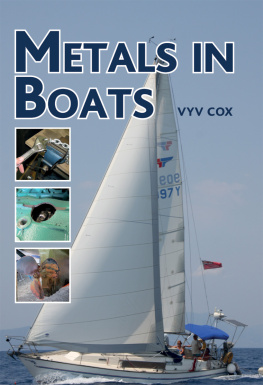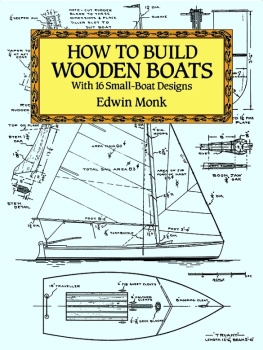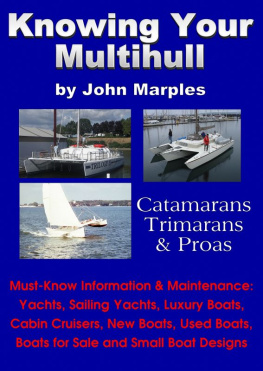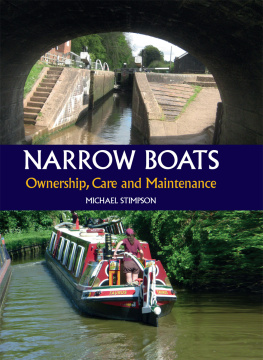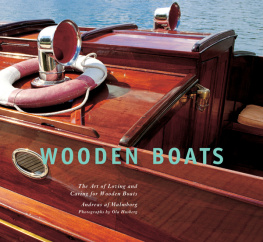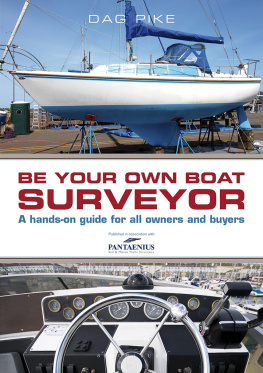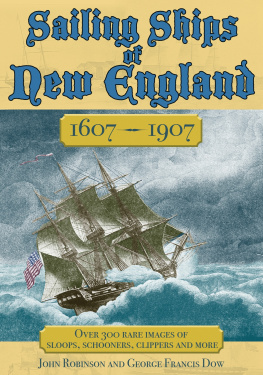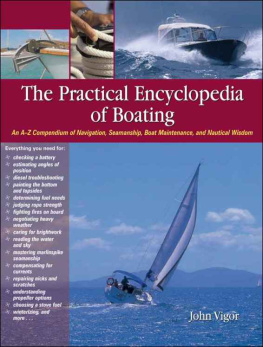M ETALS IN
B OATS
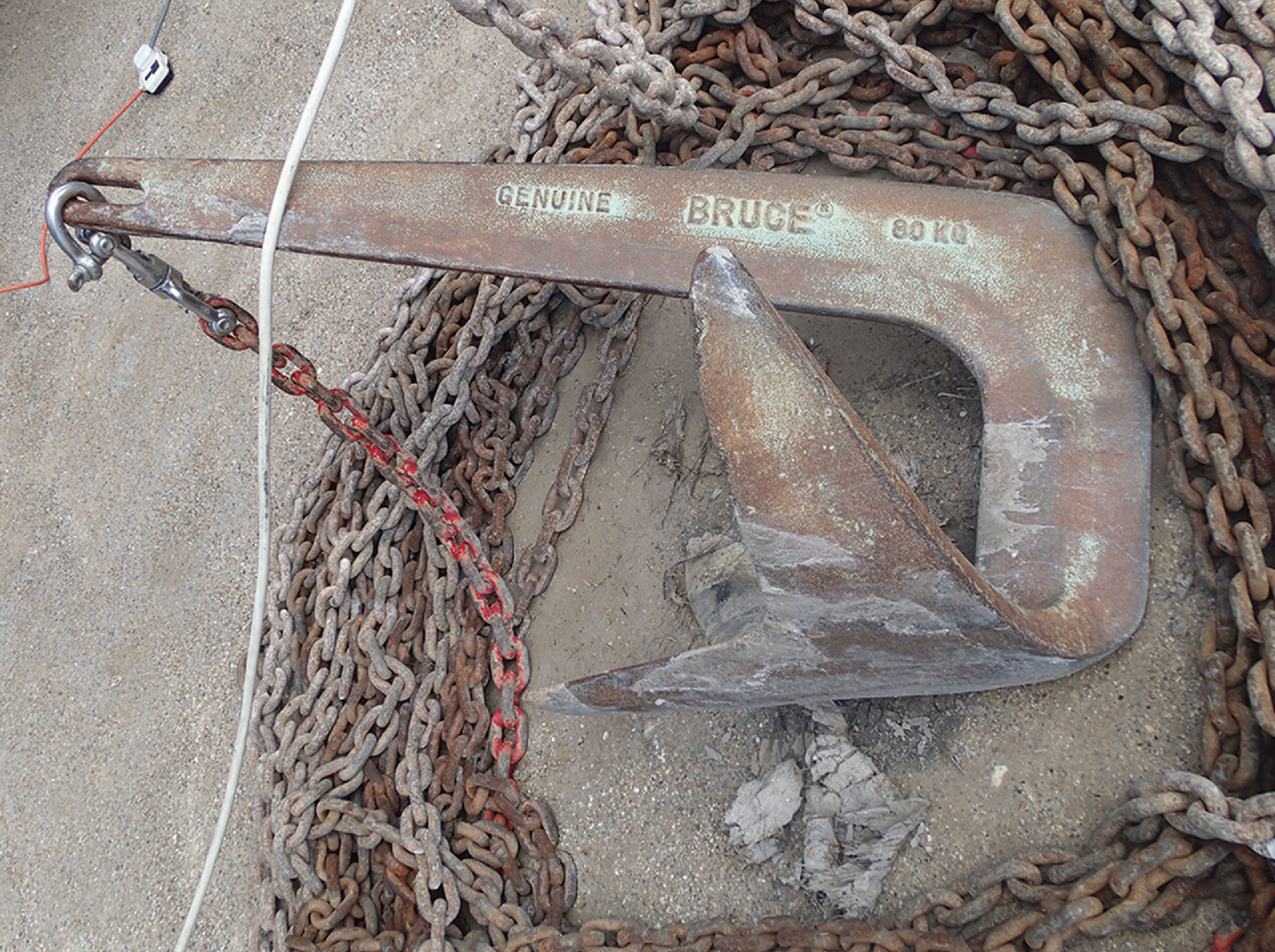
M ETALS IN
B OATS
VYV COX

THE CROWOOD PRESS
First published in 2017 by
The Crowood Press Ltd
Ramsbury, Marlborough
Wiltshire SN8 2HR
www.crowood.com
This e-book first published in 2017
Vyv Cox 2017
All rights reserved. No part of this publication may be reproduced or transmitted in any form or by any means, electronic or mechanical, including photocopy, recording, or any information storage and retrieval system, without permission in writing from the publishers.
British Library Cataloguing-in-Publication Data
A catalogue record for this book is available from the British Library.
ISBN 978 1 78500 263 2
Contents
Foreword
For more than a decade Vyv Cox has been Yachting Monthlys go-to man when it comes to technical features with an engineering slant. More often than not these features showcase Vyvs expertise in metallurgy, explaining to YMs readers how the properties of different metals can change in the harsh marine environment, and what that might mean for them and their boats.
Vyv first approached us after narrowly escaping disaster when his anchor connector failed he reasoned that if it could happen to him, it could happen to other cruisers. On our behalf he conducted rigorous destructive tests on anchor connectors and shackles. The results identified the best and the worst on the market, and he interpreted his results to demonstrate to YMs readers what it was that made one better than another. Vyvs appetite for destruction was also brought to bear on C-links, used to join lengths of anchor chain, on anchor chain itself, and on Dyneema soft shackles.
When conducting our Seacock Safety campaign, we drew heavily on Vyvs knowledge of dezincification to understand why some simple brass seacocks, skin fittings and hose tails failed so soon in their life cycle, often with dramatic results. Thanks to Vyv, this was one of our more successful campaigns. Having been convinced by his articles that brass seacocks just werent up to the job, several boatbuilders changed from brass to stronger, safer DZR fittings, and manufacturers who then made only brass fittings were persuaded to switch to DZR.
Again it was to Vyv we turned when reports arrived in the office of bent shanks on a popular brand of anchor, raising fears that corners were being cut with the grade of steel used. For a specific production period, it transpired that these fears were well founded, but the dust never quite settled until Vyv conducted a full destructive metallurgical analysis on a new anchor and proved that current models now met the original design specification.
From keelbolts, spars and rigging, to ground tackle, rudder stocks and engines: metals play a major part in sail cruising. For most of us, metal is metal. It is strong and, provided that we replace our anodes in good time, we dont need to worry about it. The truth is that very bad things can happen, and have happened, when metals, salt water, fatigue and stray current come together. This book, with its concise explanations, clear illustrations and hard data, will help you understand the potential pitfalls. Adjust your maintenance regime even the way you use your boat and youll steer clear of every one. This book will save you money. It could save your life.
Chris Beeson, Sailing Editor,
Yachting Monthly
Introduction
For nearly thirty years I worked for a multinational oil company, based initially near Chester, then later in Aberdeen and The Hague. During this period I carried out failure diagnosis on a wide variety of engineering equipment used in the production of oil and its refined products, including engines, pumps, compressors and gas turbines as well as static equipment. As all engineers will have experienced, during the course of this work I acquired detailed knowledge of associated peripheral subjects, particularly lubricants, elastomeric seals, bolts and bearings. Towards the end of my career I travelled extensively worldwide, troubleshooting and investigating problems in this vital equipment.
Upon retirement I transferred my expertise to the world of yachting, carrying out failure diagnosis for owners and in some cases writing about them for yachting magazines, principally Yachting Monthly. As time went by I also carried out destructive testing on behalf of this magazine, looking in particular at anchors and anchoring equipment.
Throughout my time at work and later I have been an active participant in yachting forums, where I found a ready source of failed components for (unpaid) consultancy supplied by many owners who had experienced failures on their yachts or who had been given suspect information by boatyards, boat builders and other owners. I created a website in which to share this information with all yacht owners at http://coxengineering/sharepoint.com.
Throughout my period at work and since I have been called upon to share my knowledge in talks, presentations and lectures. Since retirement I continued for some time with training in my professional topics but more recently this activity has also turned to yachting. Several times per year I am asked by yacht clubs, RYA local areas and Cruising Association sections to speak on a variety of subjects, but anchoring and failed components in particular. During a couple of these occasions I have shared the stage with the well-known broadcaster and yachtsman Paul Heiney, who suggested that I might like to write a book entitled Metals in Boats. I took up his suggestion, and here it is.
My thanks therefore go to Paul Heiney, Dave Lovejoy and Phil Gallagher for proofreading; my wife, Jill, for constant support and for more than her fair share of proofreading; but most of all to the members of ybw.com yachting forums and readers of my website who very kindly provide me with a vast range of interesting metallic problems and photographs to accompany them. I hope I have acknowledged you all but if I have omitted any please accept my apologies.
CHAPTER 1
Metal Facts and Properties
Modern boats depend heavily upon a wide range of metals for specialist fittings such as masts and spars, cleats and fairleads, nuts and bolts, in addition to the more mundane items such as engines, chain and anchors. Even in these parts the range of metals can be astonishing, with more specialism appearing annually. Selection of the correct metal for each task is rendered difficult because it not only has to give optimum performance in the application but also offer resistance to that ever-present corrosive medium, seawater. Even when it has been selected to satisfy these criteria it may perform poorly when attached to another metal due to the possibility of galvanic corrosion. Given the wide range not only of alloy compositions but also their manufacturing method, heat treatment and control of grain size, a good understanding is needed before specifying any metallic part.
In attempting to steer the user through the most common metals and alloys in service, this book will cover many terms with which the non-metallurgist is unfamiliar. Many specialist terms have entered general usage incorrectly, perhaps the word alloy being one of the worst examples. To the vast majority alloy means aluminium wheels on a car, or is used even by people who should know better, for example yachting journalists, just as a synonym for aluminium. The truth is very different. So without going into detailed metallurgy I will start with an explanation of some of the terms that will be used throughout the book.
Next page
